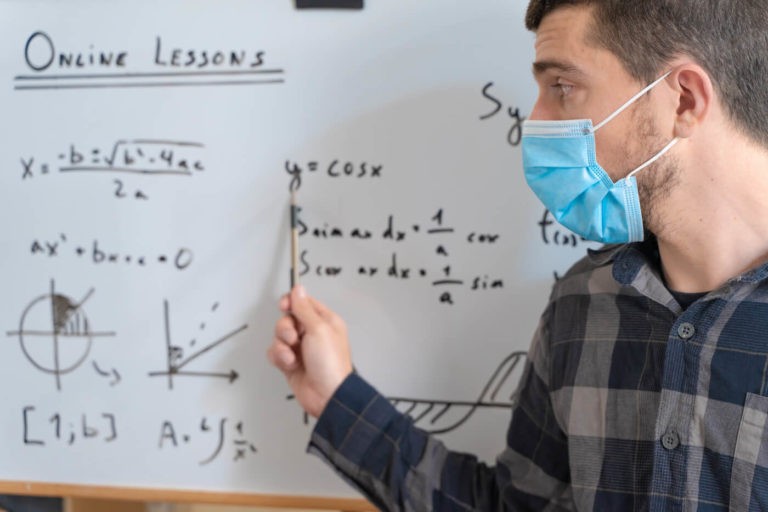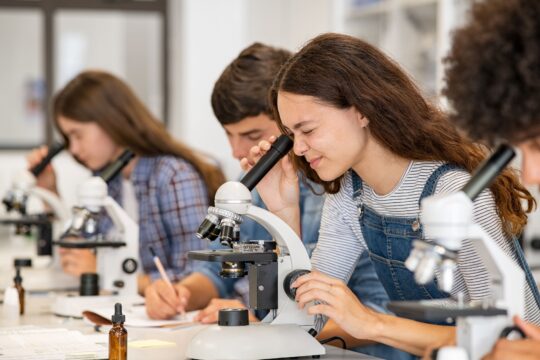What a year last year in education! COVID came in during March 2020 and stood the educational world on its head. Some spring breaks never ended and some students (as I write this article in June 2021) still have not been back on campus. Some teachers had students on campus the entire year, some had a hybrid situation with some students on campus and some students on-line, some did not know who was coming to class that day and who did the work on-line, and again, some still have not had students in their class again yet.
The delivery of instruction last year was all over the map and our amazing teachers did the best they could to deliver the best instruction possible for their students. At my school, one of our mottoes last year was to deliver the safest and most rigorous education possible.
What are Instructional Strategies?
A simple definition of Instructional Strategy is as varied as the number of instructional strategies that exist in the educational realm. So for today’s purposes, I am defining instructional strategies as the different delivery methods teachers use to pass information to their students and have them effectively demonstrate mastery of the objective.
As an educator for 19 years (ten in the classroom and nine in administration), a strategy is not effective if learning is not taking place. You can have the best lesson in the world, but if your students cannot show mastery of what you were teaching then, then what was the point?
Teachers should have a strong collection of strategies similar to a fisherman with a tackle box full of lures. On some days you don’t know until you go fishing what the best lure will be and on other days you know when you leave the house the four or five most successful lures you have used over the last twenty years.
The best teachers know their most successful instructional strategies for the last few years and how that will reach most of their students, but sometimes you have to go deep into your tackle box to get the other scattered fish in the pool.
Which Instructional Strategies did Teachers Struggle with Due to COVID?
When COVID first hit in March 2020, the need to use technology went up exponentially as Google Classroom and Canvas became some of the delivery methods of work for students.
This hit my technologically challenged teachers the hardest; it also was mainly my veteran teachers who had taught about as long as I had been in education. Great in person, but the wall that needed to be breached by technology was difficult for them. Thus the strategy of simply delivering the lesson to the student so they could watch a video created by the teacher, or from Khan Academy and then do the worksheet (that could be a bad word) was something that some teachers struggled with.
Then there were examples of other teachers in the building. Those that had their desks in groups of four, or had ways to group students by the color or letter on their desk, or by different stations in the room and used student collaboration as a standard way of teaching, essentially had one of their arms cut off.
These teachers were so good at collaborative learning that even in hybrid mode, they were asking each other how do I get to hear each group talk about how they did with the levels of organisms card sort.
There simply was a reduction, mainly due to the nature of the beast, in students being able to participate in collaborative learning.
Another area that took a hit was the ability of a teacher to maintain the focus of most or all students. With some students having natural or unnatural distractions going on behind them from wherever they were learning to not knowing who was actually going to be in your class that day because they students could choose if they felt safer at school or not added another layer to the teacher’s ability to maintain the student’s focus.
Finally, we saw teachers having difficulty taking their lesson as high on the rigor scales as they could. The more obstacles, the lower the lesson. Students still learned, depth became more challenging.
Back to Basics: Effective Instructional Strategies for Teaching
But now we are looking at a post-pandemic world. The COVID teaching era with its curveballs has helped everyone in education to get better at what we do.
Part of my end of year survey to my teachers this year included the question: What is one thing you learned that will help you in teaching through your COVID teaching experience?
Over sixty percent of the answers involved the embracing of technology as a way to deliver information and instruction to their students. Some will continue to make their videos so that students will have a library of instruction.
How is that back to basics? The teacher will be building a library of information for students to access anytime.
Second, the joy of having everyone back on campus was evident at Spring Break when we brought back our at-home learners. The kids were a little louder in the cafeteria, the teachers had an extra pep in their step and this was because they could talk to each a little bit easier.
Another effective basic strategy is student talk. The Fundamental Five by Sean Cain calls it Frequent, Small-Group, Purposefully Talk. Classroom Instruction That Works by Robert Marzano has a whole section on Cooperative Learning. Giving students a structured way with stem questions or academic vocabulary to discuss what they are learning or to work through a problem with their peers is something that has come back strong because, well, we can do it again!
Cooperative learning is also a great way for students to complete assignments at a higher rigor level as teachers can lead students into discussions that analyze and evaluate student products.
The third instructional strategy that we are seeing being embraced more is the use of nonlinguistic representations. Teachers had to find visual ways with computers and cameras for them to explain concepts and for students to explain what they learned. Teachers and students are using these thinking maps or bubble maps (insert the map you want here) more and more because the world we taught and learned became more visual than it was already.
Lastly, the desire of teachers and administrators to use some sort of data has been re-embraced. Modern day education will take that as how students are making progress toward success on standardized tests. But mainly what I mean here are teachers who want to know what deficits students have since they were at home learning for so long. A renewed desire to meet the student where they are so they can move them forward is quite evident.
In short, using technology to deliver information, collaborative learning, more visuals, and learning what our students are good at to move them forward is on the rise.
When you boil down education, it is essentially what are you teaching, how effectively did you teach it, and did the students learn it. It is exciting to see proven, basic instructional methods that were stifled or held back making a comeback in effective classrooms.




